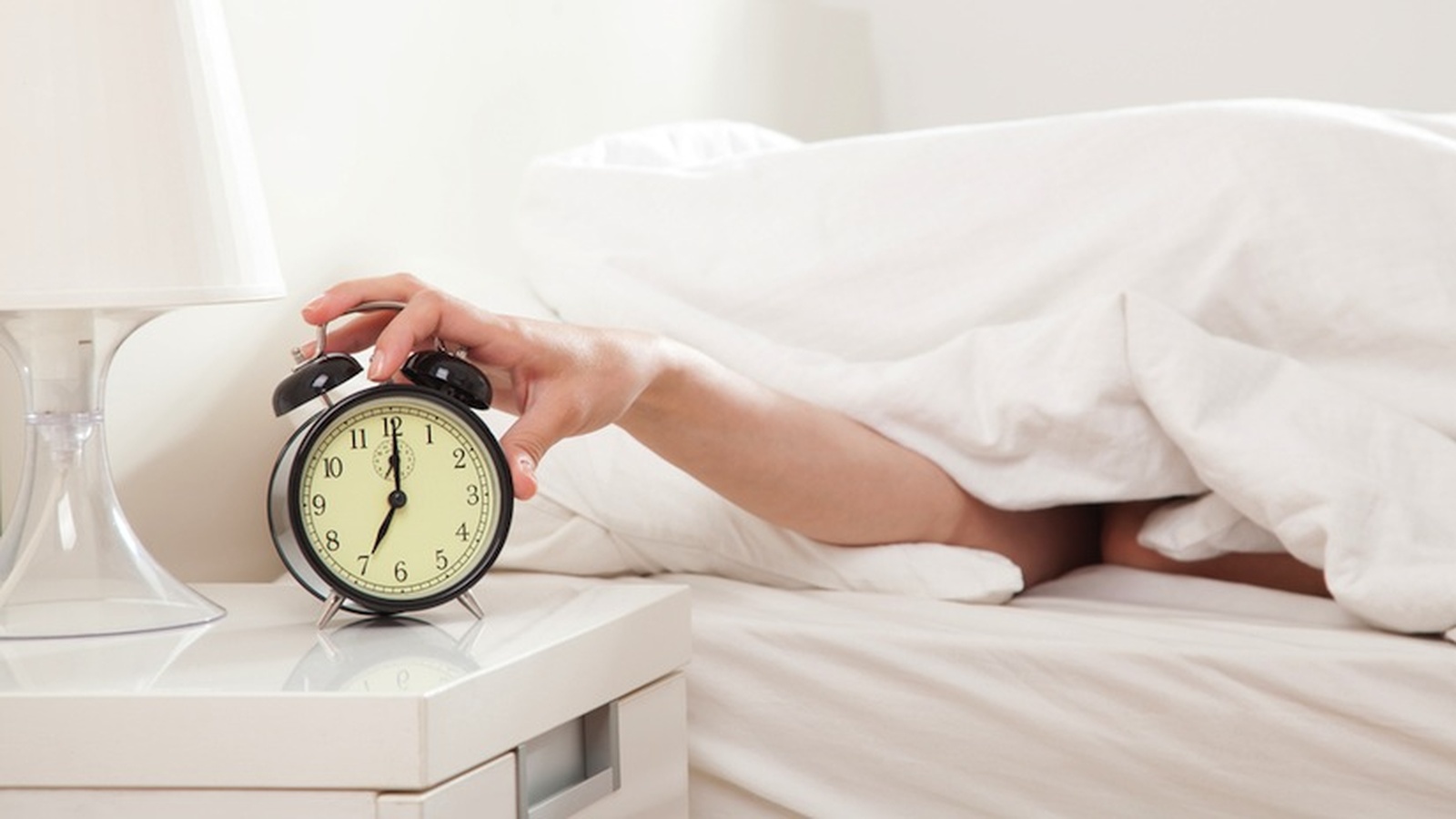Sleepless Nights? Have You Tried This?
If you’re having problems sleeping, have you ever wondered if there is something in your own home that may be keeping you awake? Often, the solution is very simple. Not only simple, but also effective, quick and cheap. Imagine how you’d feel if, by making simple changes, you could start to sleep through the night, waking up fresh and energized.
If you’re finding it difficult to get a good night’s sleep you’re not alone. In fact, you’re now in the majority. A recent survey in the US found that 52% of the respondents were classified as “not good sleepers”. Their previous survey found that two-thirds of children experience frequent sleep problems. Babies and children are particularly vulnerable to external influences impacting on their sleep and, as many of us know, having sleepless children usually means sleepless parents.
That’s many millions of people around the globe tossing and turning their way through the night, and stumbling their way through the fog of the following day. We all know that stress interferes with our ability to sleep well, but we usually associate this with psychological or emotional stress. However, there are other factors which stress our systems, and many of these occur within our own houses.
Let’s take a look at what helps us to sleep, and then at some of the things in our homes that are known to contribute to sleeping difficulties:
Melatonin
Melatonin is a hormone that is produced at night by the pineal gland. Through research it is believed that adequate melatonin production is linked to our ability to sleep. It is also heavily linked to inhibition of tumor growth, protection from cancer (particularly breast cancer) and strong immune system function. Its production is stimulated by the dark - but inhibited by the light, and also by sleeping within electromagnetic fields. To get a good night’s sleep therefore, it’s very important to sleep in an environment that promotes melatonin production, instead of suppressing it.
Lighting
If melatonin production is stimulated by the dark, and inhibited by the light - it becomes obvious that sleeping in a darkened room is going to help. How dark is your bedroom when you sleep? Do you sleep with the light on? Does the light from the hall spill into your bedroom? Does the TV flicker constantly throughout your dreams? Are your curtains or blinds thick enough to block out the light from the neighbours, and the lamps and neon signs on the street? Have a good look around your bedroom tonight, and ask yourself if there’s anything you could do to make it darker?
Electricity
Electricity can suppress melatonin production. Electricity produces electromagnetic radiation, or electromagnetic fields (EMFs), which are made up of two separate parts: the electric field, and the magnetic field. Several research studies have shown that magnetic fields inhibit or suppress production of melatonin. For some people, sleeping within a magnetic field will also disrupt their sleep. The stronger and larger a field, the more likely it is to disrupt the quality of sleep, and the more people it is likely to affect.
Strong magnetic fields are usually found around the fuse box, or electricity meter. If you’re not sleeping well, the very first thing to do is to check where this is. Is it anywhere near your bed? People often unknowingly sleep with their bedhead, or their child’s bed, backing onto the meter box. This is not only associated with insomnia, but also with weakened immune systems, which can lead to a variety of health issues. Often something as simple as moving the bed to the other side of the room has been known to dramatically alleviate sleeping problems.
I once consulted for someone who hadn’t slept properly for over two years. She averaged no more than a few hours each night, and had simply got used to feeling exhausted all the time. I found out that her bed backed onto the junction box, and suggested she move her bed. She decided to try sleeping in the spare room to see if it made a difference. From the very first night she started sleeping right through, and now has a completely different quality of life. The remedy was simple, effective, immediate and cost nothing!
Learn to look three-dimensionally - and think about what’s behind and under your bed. A junction box, a computer, TV, fridge, microwave…anything that emits an electromagnetic field around your bed may be disrupting your sleep. Large EMFs can also come from an external source, such as nearby electrical transmission lines, transformers or substations. Sometimes large EMFs within the house can be caused by a fault or anomaly in the wiring system.
Electrical appliances
Try to remove as many electrical appliances from your bedroom as possible, and make sure that those you do have are at least a metre away from your pillow.
Magnetic fields from electric appliances reduce as soon as the appliance is switched off. The electric field remains even when you have turned off the appliance switch. To reduce this field you need to turn the appliance off at the plug (or take the plug out if there is no plug switch). Be aware also that most mattresses contain metal springs, and that the metal in these springs can conduct electricity – another important reason to keep electric fields away from your bed.
Appliances to watch for in your bedroom are: Low halogen lights and digital clock radios, as these both contain transformers and often give off very large and powerful fields. Lamps with ordinary, incandescent light bulbs, and battery alarms are far better for your health. Electric blankets can emit enormous fields, and continue to emit electric fields that keep your whole system buzzing all night unless they’re switched off at the plug. If you want to keep warm in bed, either use a hot water bottle, or snuggle up to someone instead. Cordless phones and phone rechargers can also emit large fields. Both are better placed well on the other side of the room, or in the next room, as are TVs, DVD players, or music systems.
Microwave radiation
Mobile phones, ‘wireless’ technology, DECT cordless phones and digital baby monitors - just like your microwave oven - emit microwave radiation. Microwave radiation is increasingly intruding into our lives, and the more appliances we buy that use this form of energy, the more we invite it inside our own homes. And, once there, it is often operating 24/7. This is increasingly being linked with disruption in sleep patterns (in addition to other health issues such as impaired brain function and energy metabolism, fatigue and depression). Reducing your usage of this technology may well help to increase your quality of sleep.
This is relatively new technology, and as such we still are not aware of all of the health effects. However, a recent Australian study*(3) has firmly linked the use of mobile phones before going to bed with sleep disruption: it appears it stimulates brain activity in the early stages of sleep, and also reduces level of melatonin. This research also indicated there may be certain people who are particularly susceptible to the effects of mobile phone radiation.
All electromagnetic and microwave radiation is invisible stress - however, a variety of meters do exist which can measure their effect, and so make visible this invisible world. If you suspect you may have EMFs or microwave radiation in your house, and you’ve eliminated all the simple causes, it may be best to consult with someone who is experienced in this field. They can help you to detect any fields and their source, and then to find a solution.
Geopathic stress
This is an area which is not widely discussed in our society. Ancient cultures and indigenous communities are well aware of the impact of the Earth’s natural electromagnetic radiation, and also of the areas in which this becomes disrupted. These areas of disruption are often referred to as areas of geopathic stress, or geopathic zones.
Studies have been done on many indigenous and ancient sites, and have found not one built over a geopathic zone. However, in Westernised societies, most of us have lost touch with this knowledge, and so are not aware of the best areas in which to make resting places, and those to avoid.
The people who work with geopathic stress are well aware of its effect on our general health. Some research studies carried out overseas link it strongly to specific health issues - including disrupted sleep, behavioural issues, lowered immune function, and cancer.
While at a week-long conference overseas, I noticed that several people were becomingly increasingly exhausted. On asking, I found out that none of them were sleeping well. I dowsed their rooms and found a geopathic stress line going through all the beds of the people who couldn’t sleep. Those who were sleeping well, were in beds outside the geopathic stress. We moved all the beds around (much to the bemusement of the cleaners) and everyone started sleeping again.
Similarly, once while consulting on someone’s house, I dowsed an area of geopathic stress under a young girl’s bed. The mother was amazed, and she told me they had just moved the bed 10 days previously. They hadn’t been able to understand why their daughter had since been unable to sleep, had terrible nightmares and had come crying into their bedroom every night. The bed was returned to its original position, and she went back to sleeping soundly each night. Again, the solution was simple, effective, quick and free.
There is another way to gain insight as to whether geopathic stress may be affecting our houses. Nature gives us many clues. If you have any rooms that: feel cold and uninviting (in both temperature and ‘feel’); are not used, and no-one really wants to go into; are for no apparent reason full of damp and susceptible to mould; it may be possible that they are built over areas of geopathic stress. Cats love these areas; dogs avoid them. Termites, wasps and ants also love GS. Plants often won’t grow, or are distorted. So, watch out for areas in which you find these clues.
Despite our high-tech age, it’s still widely regarded that the best way to detect geopathic stress is through old-fashioned dowsing. If you think that your bedroom may be over a geopathic stress zone, try to find someone locally who works in this field, and can dowse for you - or learn to dowse yourself. Many states have a local Dowser’s Society who can put you in contact with a dowser, and many run training courses as well.
If you have determined that your bed lies over a geopathic stress line, the best remedy is always to move the bed.
Chemicals
Formaldehyde is a toxin, and is listed by the US EPA as a Group B carcinogen. It is estimated that one in five people have an overt sensitivity to formaldehyde. It is also linked to insomnia and difficulty with sleep.
Formaldehyde is a component in many of our modern building and furnishing materials - particularly in synthetics. These materials continuously ‘offgas’ formaldehyde vapour into our air, for years. The fumes are especially strong in new products that we bring into our homes. That ‘new car smell’ we all know so well is a A chemical cocktail of up to 60 VOCs (volatile organic compounds), including benzene (an EPA ‘Group A carcinogen’) and formaldehyde.
Formaldehyde is a particularly insidious chemical. As well as being a potential carcinogen, long-term exposure is thought to be an immune system sensitizer (ie, exposure to it can lead to multiple allergies and sensitivities to substances that are entirely unrelated to formaldehyde itself).
Obviously when talking about sleep, we’re looking for sources of formaldehyde in our bedroom. These can include: anything made of particleboard or MDF; carpeting and underlay; foam and fabrics in furniture; pesticides; adhesives, varnishes and paint; material dyes and finishing products; fabric pre-stainer and softeners; ‘easy-iron’ or ‘crease-free’ fabrics; disinfectants and air fresheners; preservatives in wood and wallpaper; personal care products and cosmetics (among others).
If you have just had your bedroom decorated, you can help the fumes to escape, and prevent their accumulation, by opening the windows and ventilating the room. Make sure you do this for some time each and every day, particularly just before you go to bed. Ideally, leave your bedroom window open so that you’re sleeping with a constant supply of fresh air.
Be especially aware of this when decorating a bedroom for a new baby or child, as they are much more sensitive and vulnerable. Try to decorate the room as far in advance as you can, so that any fumes have time to diminish. Use non-toxic or bio-friendly paints, and furnish it with products made from natural materials. If you have any furniture made of MDF, then seal it using a non-toxic sealer. When it next comes time to buying bedding, consider bed linen made from organic cotton, which has not been grown with chemicals, or treated with formaldehyde in the manufacturing process. For people of all ages, easy-care sheets may definitely not be leading to easy sleep.
So, to summarise: to get a good night’s sleep, the main area to consider is your bedroom. Check it’s not near the junction box, is free of as many electrical appliances as possible, and that those you do need are at least a meter away from your pillow. Consider your usage of wireless technology and whether you can reduce that – and don’t forget to cut down on mobile phone calls later in the day. What sources of formaldehyde are there? Is it possible for you to find out if you’re sleeping over an area of geopathic stress? If in doubt about the position of your bed, move the bed around and try sleeping in different areas of the room for a while, to see if that helps.
Sleep is one of our most precious resources. If you get enough beautiful, restful sleep you are more likely to have enough vitality to bounce forward into life with a spring in your step. You’ll look and feel wonderful. Take the time to learn about your home, particularly your bedroom. Look after it, and it will look after you.
Alison Wilson BBEC, is a Building Biologist and Associate Director of the Sydney School of Feng Shui. Her business Healthy Homes, consults and runs courses teaching people how to transform their houses into Healthy Homes.
Discover how to eat your medicine to heal your gut, eliminate bloating, skin issues and hair loss as I share seven nutrition principles in this free masterclass. Running for a limited time only.









